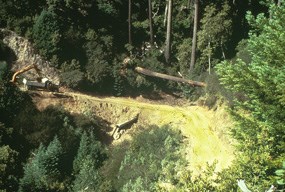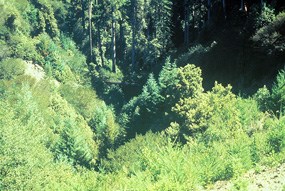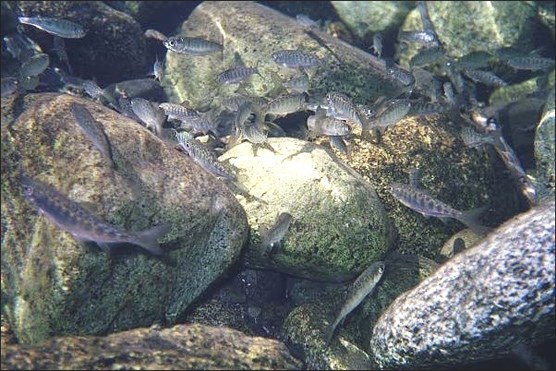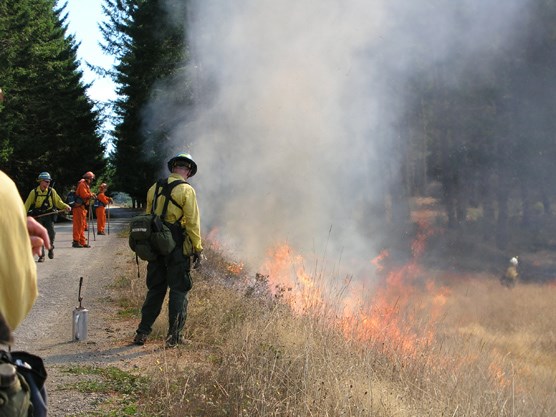
note the placement of the horizontal log. NPS 
NPS Watershed Restoration The forest restoration work is accomplished in part by using large, heavy equipment, primarily bulldozers and excavators. Click on Watershed Restoration for an 8-page newspaper on the subject in .pdf format. 
Ethan Bell Salmon Species Placement of large in-stream wood structures, removal and modification of unnatural fish barriers, reestablishment of streamside (riparian) vegetation, and modification of existing flood control levees are also improving fish habitat. Other measures that benefit salmonids are the prioritization of roads slated for removal by risk failure (potential for erosion) and sensitive resources (number of fish species and their population size) and review of timber harvest plans adjacent to the park. Annual surveys in summer and winter are conducted to provide information on the status of salmon and steelhead. Two decades of monitoring juvenile salmonids in summer and fall in the Redwood Creek estuary has verified the prominent role of estuaries in the life cycle of chinook salmon and steelhead and the importance of small coastal estuaries in degraded watersheds. The park is proposing to restore the Redwood Creek estuary to a fully functioning ecosystem benefiting fish, wildlife, and the public. 
NPS Living with Fire During your travels through Redwood National and State Parks, you may notice trees and landscapes (particularly prairies) that have been influenced by fire. Some fire scars happened due to lightning strikes, some charing comes from traditional ignited fires of past centuries, and some from park management using prescribed fire. The Indigenous method of managing plant communities with fire contributed to ecosystem health by clearing brush and encouraging new growth. However, management practices by Euro-Americans brought a century of fire suppression and altered landscapes. Today, park resource managers are returning to the traditional practice of using fire to maintain landscape health. It is the long-term goal for RNSP to restore park lands to the state that existed just prior to Euro-American contact and influence. By using prescribed fire on a regular basis, park managers have set the following goals for prairies and redwood forests. Objectives for prairies and oak woodlands:
Objectives for Old Growth:
|
Last updated: January 24, 2022
